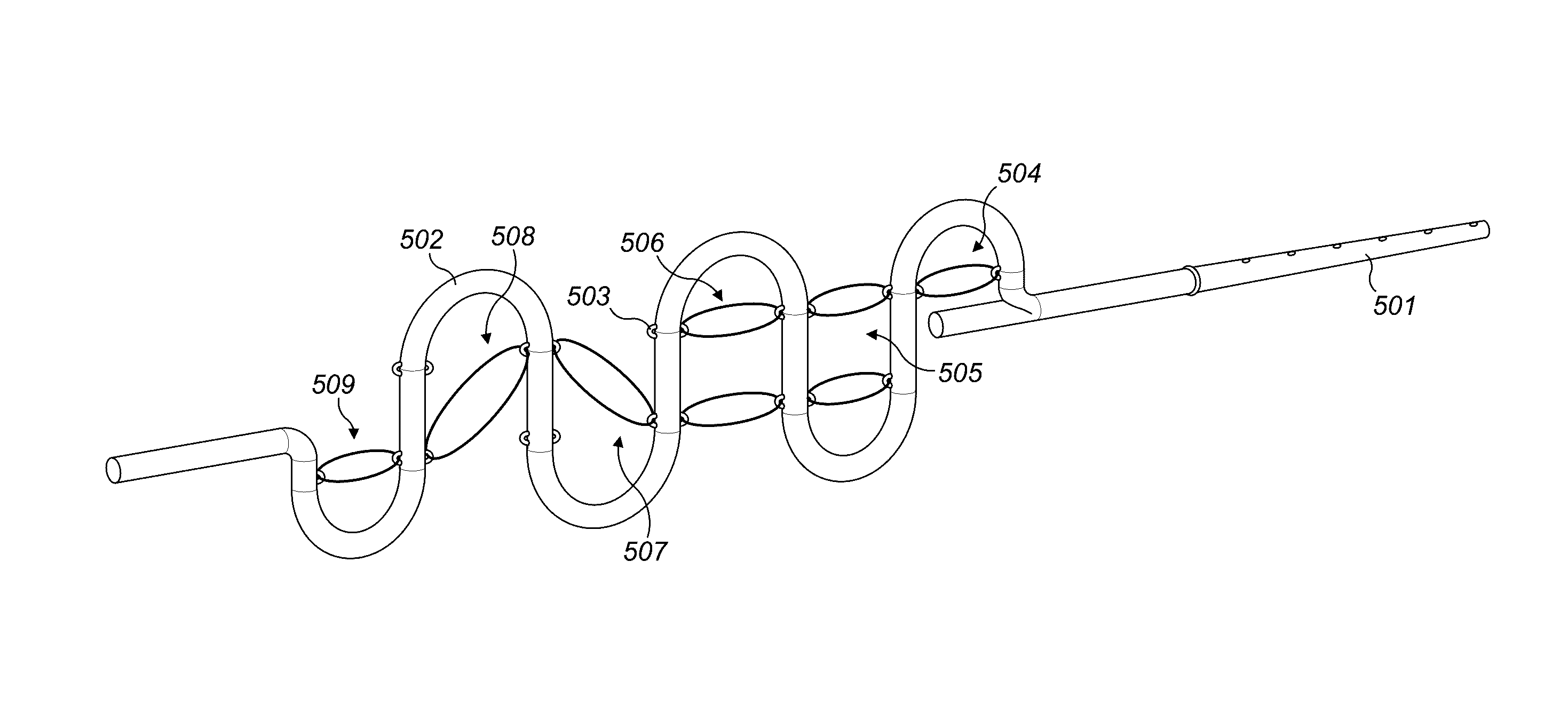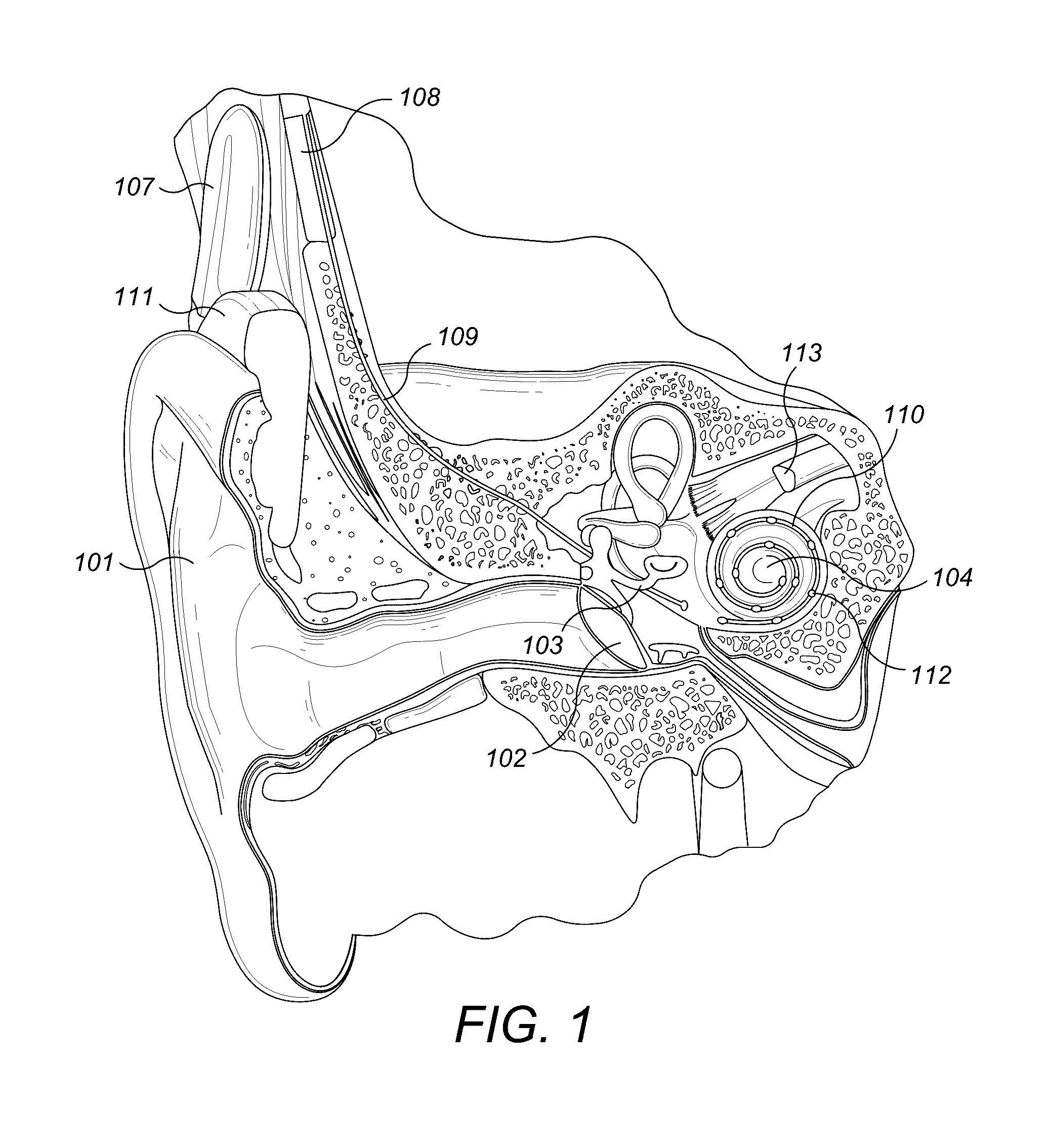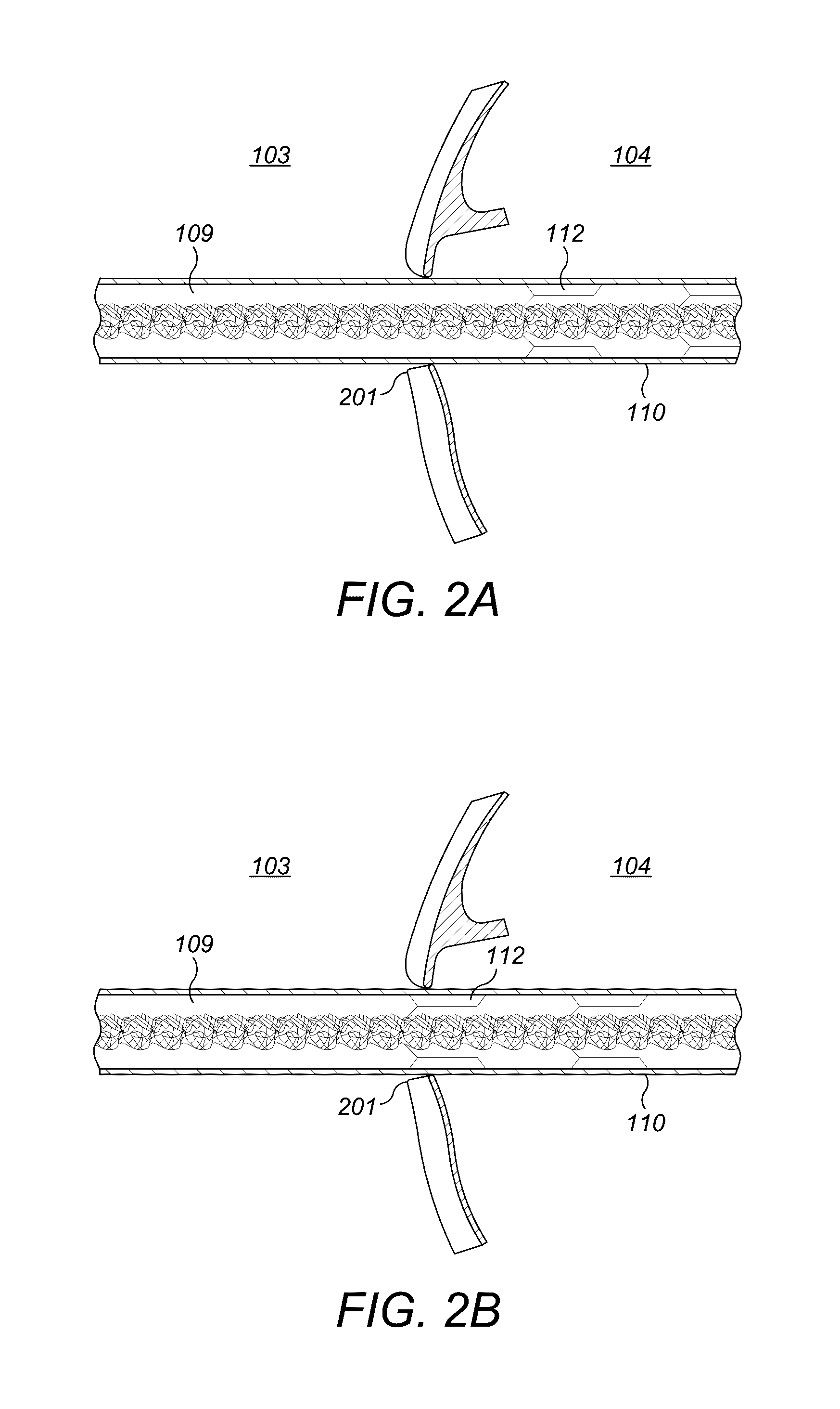Modified electrode lead for cochlear implants
a cochlear implant and electrode lead technology, applied in the field of medical implants, can solve the problems of discomfort and cosmetic unsightly appearance, and achieve the effect of dissociating post-surgical mechanical strain
- Summary
- Abstract
- Description
- Claims
- Application Information
AI Technical Summary
Benefits of technology
Problems solved by technology
Method used
Image
Examples
Embodiment Construction
[0024]Embodiments of the present invention are directed to a cochlear implant electrode arrangement that resists post-surgical retraction of the inserted electrode array back out of the electrode opening due to growth of the mastoid bone. Such arrangements also avoid pressing excess slack in the electrode lead against an anatomical structure such as the skin covering skull bone behind the ear or covering the outer ear canal.
[0025]One such arrangement for an implantable electrode of a cochlear implant system uses a malleable lead holder structure as shown in FIGS. 3A-3B. A flexible intracochlear electrode array 301 has an outer surface along which are distributed electrode contacts for applying cochlear stimulation signals to target neural tissue within the implanted cochlea. A flexible extracochlear electrode lead 302 is coupled at a lead proximal end coupled to an implanted signal processor that provides the cochlear stimulation signals. A lead distal end of the electrode lead 302 ...
PUM
 Login to View More
Login to View More Abstract
Description
Claims
Application Information
 Login to View More
Login to View More - R&D
- Intellectual Property
- Life Sciences
- Materials
- Tech Scout
- Unparalleled Data Quality
- Higher Quality Content
- 60% Fewer Hallucinations
Browse by: Latest US Patents, China's latest patents, Technical Efficacy Thesaurus, Application Domain, Technology Topic, Popular Technical Reports.
© 2025 PatSnap. All rights reserved.Legal|Privacy policy|Modern Slavery Act Transparency Statement|Sitemap|About US| Contact US: help@patsnap.com



